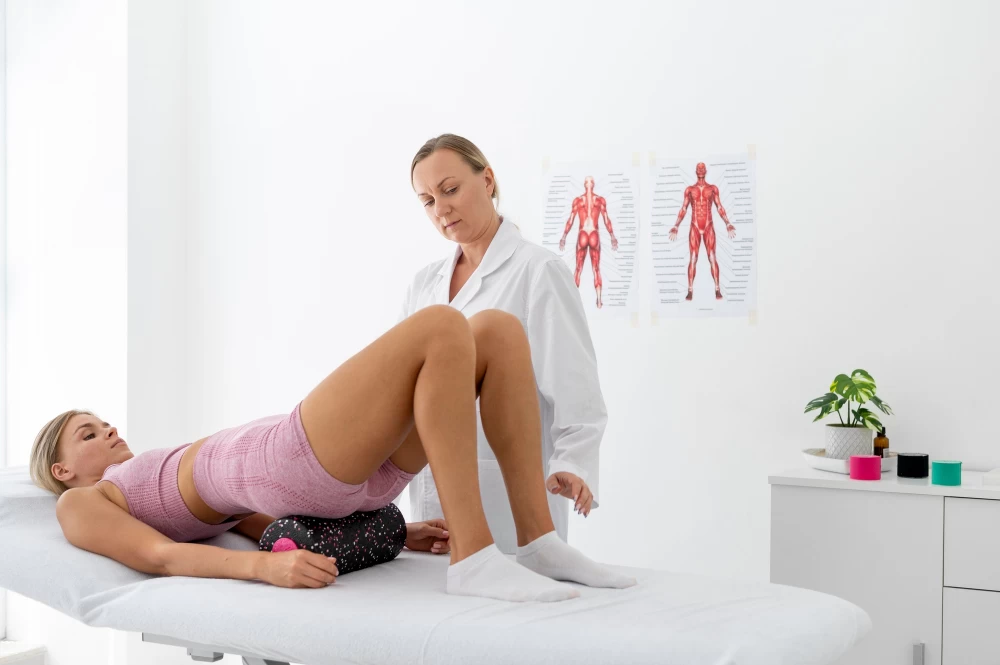
Pelvic Floor Rehabilitation
- Pelvic Floor Rehabilitation
- What is the Pelvic Floor?
- What Are the Functions of the Pelvic Floor Muscles?
- Why Are Pelvic Floor Muscles Weakened?
- What Causes Weakness of Pelvic Floor Muscles?
- How Does the Rehabilitation Process of Pelvic Floor Muscles Work?
What is the Pelvic Floor?
The pelvic floor is a structure made up of muscles, ligaments and tissues located in the lower region of the pelvis. It provides stabilization of the body together with the pelvic floor, abdomen and lower extremities.
Pelvic floor muscles are important for urinary and stool control, sexual functions and stabilization of the pelvis. These muscles control the organs in the pelvic region (bladder, rectum, reproductive organs) and regulate the blood circulation in the region. It also supports the posture of the body by working with the back and hip muscles.
The correct function of the muscles and connective tissues that make up the pelvic floor is important for overall health and good quality of life. When they do not create sufficient and correct function; It can cause problems such as urinary incontinence, pelvic pain, sexual dysfunctions, constipation, irritable bowel syndrome, chronic abdominal pain. Therefore, it is recommended to give importance to pelvic floor health and to do exercises to strengthen the pelvic floor muscles.
What Are the Functions of the Pelvic Floor Muscles?
Pelvic floor muscles perform the function of holding urine and stool by controlling the pressure inside the bladder and rectum. These muscles contract when it is desired to urinate or defecate, and they allow the evacuation of the organs. They also increase sexual pleasure and orgasm by contracting during intercourse.
They also support the posture of the body by working together with the muscles of the lower extremities and back by stabilizing the pelvis. These muscles are also important in the prevention and treatment of problems such as low back pain and pelvic pain.
Having strong and functional pelvic floor muscles is important for overall health and good quality of life. However, factors such as aging, pregnancy, childbirth, weight gain, chronic constipation or chronic cough can cause weakening or loss of function of the pelvic floor muscles. Therefore, it is recommended to do exercises to strengthen the pelvic floor muscles and give importance to pelvic floor health.
Why Are Pelvic Floor Muscles Weakened?
Pelvic floor muscles can weaken due to a variety of factors. These factors may include:
- Aging: As we age, all muscles weaken and lose their elasticity, including the pelvic floor muscles. With old age, the pelvic floor muscles cannot function. Thus, loss of sexual function is encountered along with situations such as urinary and fecal incontinence.
- Pregnancy and childbirth: During pregnancy, the pelvic floor muscles are overstretched due to the growth of the baby During normal delivery, it is stretched more during the passage of the baby and may even rupture. Therefore, postpartum pelvic floor muscle weakness and loss of function is a common problem.
- Weight gain and obesity: Being overweight or obese puts excessive pressure on the pelvic floor muscles, which can lead to muscle weakness and loss of function.
- Insufficient physical activity: Regular exercise is important for strengthening the pelvic floor muscles. Insufficient physical activity can lead to their weakening and reduced functioning.
- Smoking: Smoking reduces blood flow to the pelvic floor muscles, which can lead to muscle weakness and loss of function.
- Chronic cough: Chronic coughing can cause excessive strain and weakening of the pelvic floor muscles.
Because of all these reasons; It is important to regularly strengthen the pelvic floor muscles and improve their functions.
What Causes Weakness of Pelvic Floor Muscles?
Below are some of the problems that can be caused by weakness of the pelvic floor muscles:
- Urinary incontinence
- Fecal incontinence
- Pelvik pain: Painful sexual intercourse may manifest with symptoms such as pain or tightness in the pelvic region.
- Sexual dysfunction: It can reduce sexual pleasure or prolong orgasm time.
Pelvic organ prolapse: It can cause displacement or sagging of the pelvic organs. This can manifest as a downward prolapse of the bladder, uterus, or rectum.
How Does the Rehabilitation Process of Pelvic Floor Muscles Work?
Rehabilitation of the pelvic floor muscles is carried out using special exercises and techniques to strengthen the muscles and improve their function. Below are the general steps of the rehabilitation process of the pelvic floor muscles:
- Evaluation: The strength and function of the pelvic floor muscles are evaluated by the doctor. This evaluation is done using special tests and examinations.
- Exercise program: A special exercise program is created to strengthen the pelvic floor muscles and improve their functions. This program includes exercises that target muscles and have varying levels of difficulty.
- Biofeedback: Biofeedback is a technique in which muscle activity is measured. This technique is used to assess whether the pelvic floor muscles are being used correctly and how strong the muscles are. Biofeedback is a technique used to increase the effectiveness of the pelvic floor muscles.
- Electromyography (EMG): EMG is a technique in which the electrical activity of the muscles is measured. This technique is used to determine if the pelvic floor muscles are working properly. EMG, used together with biofeedback, helps the pelvic floor muscles to work better.
- Other treatments: Rehabilitation of the pelvic floor muscles is used in conjunction with other treatments in some cases. These treatments may include medication, surgery, or pelvic floor massage.
Rehabilitation of pelvic floor muscles is a process that requires a personalized approach. Therefore, after the evaluation by the doctor, a personalized treatment plan is created. Rehabilitation of the pelvic floor muscles is usually completed successfully, supported by regular exercises, biofeedback, and other treatments.





